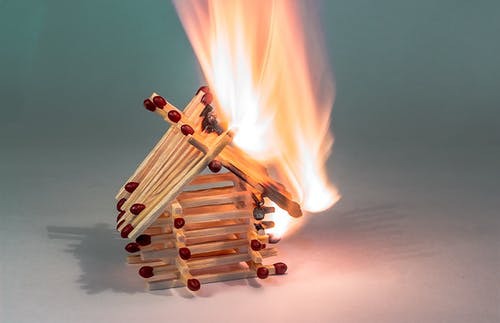Where Does Mold Commonly Hide in Commercial Spaces?

When it comes to commercial spaces, mold can be a sneaky and unwelcome tenant. It often goes unseen, increasing in the nooks and crannies of buildings, all the while posing a risk to your health and the structural integrity of the property.
Understanding where mold hides is the first step in taking action against it. In the following article, we’re going to explore the most common hideouts of mold in commercial environments.
1. Bathrooms and Kitchen Spaces
Have you ever wondered why bathrooms and kitchen areas in your office or commercial building seem to be battlegrounds for mold control? These areas typically have higher humidity levels, which make them prime spots for mold to flourish. The constant presence of water, whether from sinks, toilets, dishwashers, or even the steam from a hot shower, creates perfect conditions for mold spores to settle down and multiply.
Despite your best efforts, sometimes mold finds a way. That’s when professional intervention is necessary. An Indianapolis mold restoration company specializes in identifying the root cause of the mold, removing it meticulously, and ensuring it doesn’t make an unwelcome return.
2. Heating and Cooling Systems
Mold doesn’t just limit itself to the obvious wet areas; it can be quite the opportunist, finding its way into heating, ventilation and air conditioning (HVAC) systems. It happens more than you think – condensation builds up within ductwork and on AC units, and mold takes hold. It’s not just an issue of cleanliness; it’s a matter of moisture control, and these systems can spread mold throughout the entire building if not properly maintained.
3. Ceilings and Ceiling Tiles
Sure, you don’t generally spend much time looking up at your ceilings, but maybe you should. Ceiling tiles, especially those in older buildings, can absorb moisture and harbor mold growth. Leaky roofs add to the problem, providing a continual source of moisture that encourages mold to settle in unnoticed.
When a commercial space is hit by mold, professional restoration becomes critical. A Greenfield property restoration company can go beyond simple mold removal. They offer a comprehensive suite of services that deal with water damage, fire and smoke restoration, and more, helping prevent further mold outbreaks and guaranteeing a secure, healthy environment for both employees and clients.
4. Behind the Walls
It could be happening right now, behind that peaceful scene of painted drywall – mold, silently spreading where you least expect it. Pipes that have minor leaks or walls that have been exposed to flooding are prime spaces for mold. This can be quite a tricky situation because you often won’t know it’s there until it has become a major problem.
5. Carpet and Upholstery
Think about all the dust, food particles, and moisture that get trapped in the carpets and upholstery of a high-traffic commercial area. Cleaning may get rid of the surface dirt, but when moisture gets involved, the conditions are set for mold to take root in the fibers and padding underneath.
6. Subflooring and Baseboards
Under your feet could lie a silent, spore-filled foe—subflooring and baseboards can collect moisture, especially if a building has experienced flooding or persistent leaks. Once mold sets in there, it can spread quickly, latching onto any organic material it can find.
7. Warehouses and Inventory
In storage areas and warehouses, there’s no end to the spots where mold can grow. Mold loves cardboard and other organic packing materials. When moisture is introduced, perhaps through a leaking roof or damp conditions, mold can take over, potentially damaging inventory and contributing to poor air quality.
How the Exterior Affects the Interior
Mold isn’t just an inside job. How you manage the exterior of your property can have significant effects on the interior mold situation. Make sure downspouts and gutters are clear so that water is directed away from your building. Also, keep an eye on the exterior walls; any cracks or signs of moisture penetration need to be addressed swiftly to prevent mold from sneaking in.
Mold Prevention Practices
-
Regular Maintenance: Regular maintenance is crucial for identifying and addressing potential sources of moisture that can contribute to mold growth. Keep a close eye on areas where water is used or condensed, such as bathrooms, kitchens, laundry rooms, and basements. Check for leaks, drips, or condensation around plumbing fixtures, appliances, and HVAC systems. Promptly repair any leaks or water damage to prevent moisture buildup and mold growth.
-
Proper Ventilation: Proper ventilation is key to controlling humidity levels and reducing moisture buildup in indoor spaces. Install and maintain vents, exhaust fans, or ventilation systems in high-moisture areas such as bathrooms, kitchens, and laundry rooms. Ensure that ventilation fans are properly sized and functioning effectively to remove excess moisture and prevent condensation on surfaces.
-
Immediate Repairs: Addressing leaks and water damage promptly is essential for preventing mold growth before it starts. Inspect your property regularly for signs of water damage, such as stained ceilings, peeling paint, or musty odors. If you discover any leaks, drips, or water infiltration, take immediate action to repair the source of the problem and dry out the affected areas thoroughly to prevent mold from taking hold.
-
Dehumidifiers: Using dehumidifiers in particularly damp areas can help keep moisture levels under control and inhibit mold growth. Dehumidifiers remove excess moisture from the air, reducing humidity levels and creating a less hospitable environment for mold spores to thrive. Place dehumidifiers in basements, crawl spaces, or other areas prone to high humidity to maintain optimal moisture levels and prevent mold growth.
Final Thoughts
Remember that vigilance and timely action are your best defenses. Keeping your eye out for suspicious spots or a musty smell, maintaining the property, and reacting swiftly to water damage can help keep your commercial space mold-free. But don’t hesitate to get professional help when it’s over your head. Your health and property are worth the investment.

